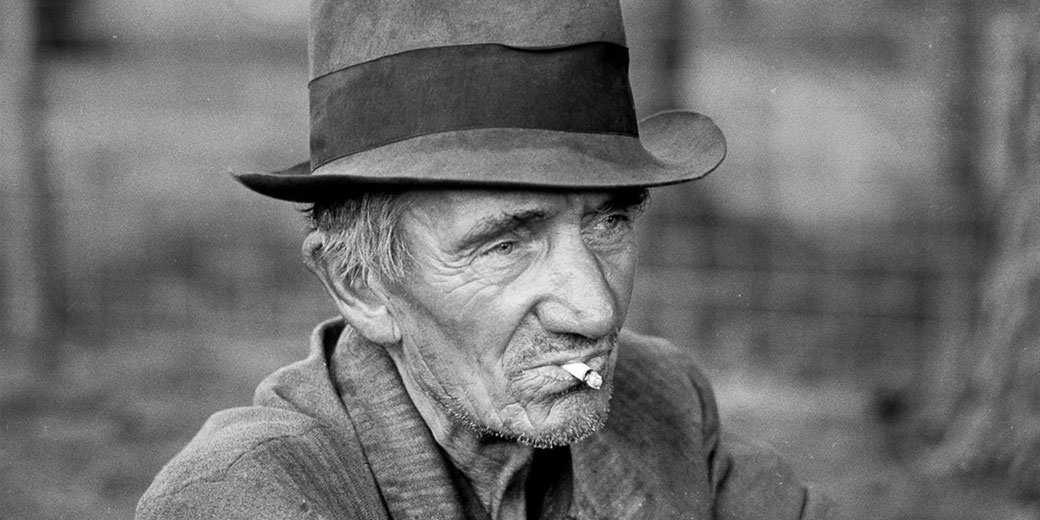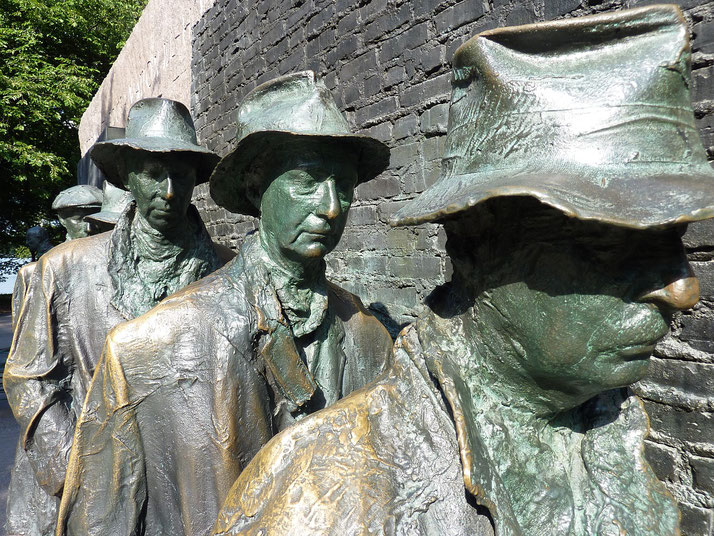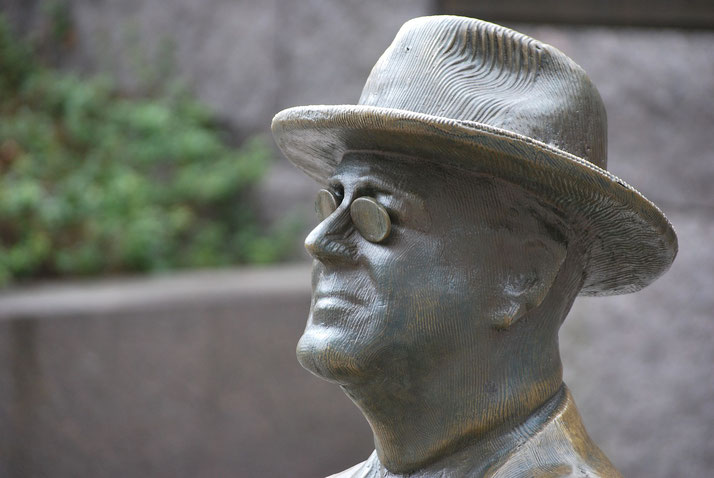Understanding the Great Depression: Causes, consequences, and the road to recovery

The Great Depression was a period of economic hardship that occurred between 1929 and 1941. This primarily impacted the United States of America, but consequences of the depression also had global effects.
During these years, businesses failed, banks closed, and unemployment reached unprecedented levels. Across the United States, once-thriving communities faced hardship and despair as they struggled to survive.
Short-term cause: Black Tuesday
The Great Depression if often considered to have been caused by a single event on the 24th of October 1929, called 'Black Thursday'.
On this day, a general panic set in among investors, who were worried that the values of their company stocks were about to fall.
Stockbrokers were inundated with millions of orders to sell off stocks as quickly as possible.
However, nobody wanted to buy them. So, as a result, stock prices plummeted. It would become the largest sell-off of shares in U.S. history.
Five days later, on the 29th of October 1929, called 'Black Tuesday', things got even worse.
The New York stock market crashed, with over 16 million shares sold in a single day.
Unfortunately, panicked selling of stocks only decreased their value further. By the start of the next day, most people who owned stock in America had lost all of their wealth.
By the end of December, around $40 billions of US shares value had been lost.
The market did not recover. It took months for any sign of change.
Long-term causes: Stocks and hire-purchase schemes
The dramatic loss in value was the result of two underlying problems which had developed during the Roaring Twenties.
The first was the fact that many companies had produced more items than they could sell.
To solve this problem, most middle class and poorer Americans had relied upon hire-purchase schemes, on the belief that they could pay off their purchases over time, as long as they had work.
The second problem was over-inflated prices of US stocks. Many investors during the 1920s had borrowed money to buy stocks on the share market, as they believed that stocks would continue to increase in value so that they could be sold later for a profit.
However, with so many people buying stocks on credit, the price of stocks went up quickly, which made people believe that they had more wealth than was realistic.
So, when people started selling stocks in the hope of getting their money back, the price of those stocks also dropped dramatically.
This meant that when people went to sell them, they were being paid back less money than they had bought them for.
The result was that after all their stocks had been sold, people were still in debt.
With their wealth gone, people were now no longer able to pay for their hire-purchase items.
Millions of Americans panicked and rushed to the banks to withdraw whatever cash they had left.
Such rapid withdrawal of cash from the banks meant that banks also ran out of money.
As a result, banks all across America were forced to close. More than 5000 banks shut between 1930 and 1932.
Those people who didn't act fast enough and went to their local bank, found the doors were locked and they would never get their money back.
Widespread unemployment
The closing of so many banks meant that many businesses also lost their cash and were forced to close.
As businesses closed across the country, people lost their jobs and had no other businesses to go to get another one.
For those businesses that could still operate, they began reducing their workers' wages to try and keep them in employment, but it meant that they barely had enough money to live on.
As a result, people began to limit their spending in order to just afford food for their families.
However, just as regular people needed to make cuts to their spending to survive, so did many other businesses.
Since no one was buying their products, factories had to reduce their output. As a result, they had to fire workers who were no longer needed.
Ultimately, the number of people without jobs continued to increase during the first few years of the Great Depression.
In 1929, around 3% of the American population was unemployed. Now, around 100,000 Americans were losing their jobs each week.
By the end of 1932, almost 13 million had no jobs to go to. By 1933, around 25% of the US population were unemployed.
Roosevelt's 'New Deal'
The American President at the time of the stock market collapse was Herbert Hoover, but he had only been in the role for six months by that stage.
He tried to take the initiative to counteract the collapsing economy. In an attempt to stabilize the economy, President Hoover created the Reconstruction Finance Corporation (RFC) in 1932, which provided emergency loans to banks, railroads, and other large businesses to prevent further bankruptcies.
He also provided tax cuts to American so that they could buy necessities. Also, Congress approved his plan to invest over $1 billion into hiring people to staff massive government projects like the Boulder Dam on the Colorado River. It would later be called the Hoover Dam.
Unfortunately, despite these measures, Hoover never found a successful solution to the economic collapse and, when many unemployed people began living together in groups of shacks known as 'shanty towns', people angrily called them 'Hoovervilles'.
However, in 1932, another presidential election occurred, where the American people had the opportunity to seek a solution to the Great Depression.
Hoover ran for president again but lost significantly to Franklin D. Roosevelt.
Roosevelt began his presidency with a clear strategy. First, he closed all the banks in America in March 1933 for four days during the 'Bank Holiday'.
After this, the Emergency Bank Act allowed a few to gradually reopen once they were deemed to have reached economic stability.
Then, in 1933, Roosevelt announced a program of economic recovery, which he called the 'New Deal'.
The New Deal was a range of programs and new organisations that were set up to create jobs for people.
He set up a group called the Agricultural Adjustment Administration to help farmers by reducing crop surplus and stabilizing agricultural prices.
Alos, he created the Works Progress Administration in 1935 to help people find work.
Ultimately, the US government began hiring people to work on government projects to get people paid once more.
He created the Federal Emergency Relief Administration, which immediately spent $5 million to help homeless Americans.
One new project, known as the Civil Works Administration, employed 4 million people.
They built 40,000 schools, 1,000 airports, and completed road repairs.
While another agency, the Civilian Conservation Corps, hired an additional 2 million for manual labour jobs, including planting trees, building park facilities, and combating soil erosion.
Finally, the Social Security Act of 1935 was a key cornerstone of Roosevelt's New Deal. It introduced unemployment insurance, old-age pensions, and aid to families with dependent children, which lay the foundation for the modern welfare state in America.
In addition, Roosevelt used his famous 'Fireside Chats,' which were a series of radio broadcasts, to communicate directly with the American public, in order to explain his New Deal policies and try to calm fears during the height of the economic crisis.
The New Deal saw some gradual economic improvement, but things were still very difficult for most Americans.
Roosevelt became very popular though, as it was clear that he was working hard to find solutions. Consequently, Roosevelt was reelected as president in 1936.
The outbreak of war
The event that finally ended the Great Depression was the surprise attack on Pearl Harbor by the Japanese in December 1941.
The attack forced Roosevelt to begin war preparations, and American factories were required to produce weapons and armaments for the government.
The explosion in production required many more factory workers, which created a dramatic change to unemployment.
Furthermore, thousands of men were recruited into the armed forces, which gave them a steady income.
By the start of 1942, the American economy was showing substantial improvements for the first time since 1929.
By the end of the Second World War in 1945, America had one of the strongest industrial and economic systems in the world.
What do you need help with?
Download ready-to-use digital learning resources
Copyright © History Skills 2014-2025.
Contact via email
With the exception of links to external sites, some historical sources and extracts from specific publications, all content on this website is copyrighted by History Skills. This content may not be copied, republished or redistributed without written permission from the website creator. Please use the Contact page to obtain relevant permission.








